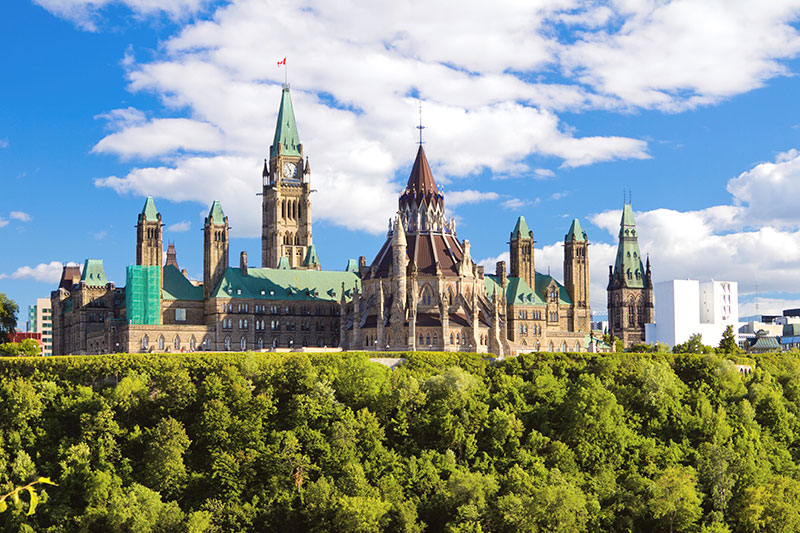On October 19, the week after the NAIOP Commercial Real Estate Conference, Canadians will go to the polls for federal elections. And as Canada operates as a parliamentary democracy, it’s a combination of a congressional and a presidential election rolled into one.
Since NAIOP members will be in Toronto the week beforehand and will likely hear dialogue about the elections, there’s no time like the present to study up so you’re able to engage in the conversation. Consider this your U.S. guide to how the Canadian elections work.
Canadians go to the polls in their riding – or their electoral district – much like we do in the U.S. Here they vote for their representative in Parliament.
Unlike the U.S., there are three major parties to choose from: the Conservative Party (right-leaning), the New Democratic Party (left-leaning) and the Liberal Party (ironically, the centrist party). In addition, there are a number of smaller, often regional parties including the Green and Bloc Quebecois.
The candidate with the most number of votes in a riding wins. Note: they need not win a majority of their riding. This would be difficult with at least three parties to choose from. They need only to be the largest vote-getter. No perplexing electoral college here.
After the election is over, the party with the most seats in Parliament then form a government. That means the head of that party becomes the prime minister. There is no separation between the executive and legislative in Canada – the prime minister is also a member of Parliament. It would be like a U.S. president also being a member of Congress.
This year, a party will need 170 seats to win a majority in Parliament. That doesn’t look likely to happen.
The ruling conservatives, with Stephen Harper as the incumbent prime minister, are currently polling at 124 seats. The Liberal Party is leading in the polls with 127. It’s a close race. But it looks like neither will have enough of a lead to win an outright majority.
So what happens? A minority government forms. The party with the most votes gets the prime minister’s office, but it must work with the minority parties to get bills passed into law.
There is a Senate in Canada, but its members are appointed, not elected.
This is, understandably, somewhat controversial. The prime minister appoints senators who serve until retirement, death, impeachment or age 75, whichever happens first.
The good news is the Senate is mostly a rubber stamp, approving just about everything Parliament sends its way.
And remember, no matter who wins on October 19, one thing will remain the same: Canada’s official head of state will remain Her Majesty, Queen Elizabeth II. Canada has been a member of the British Commonwealth since 1931.
Want to learn more? Here are some digital resources:














